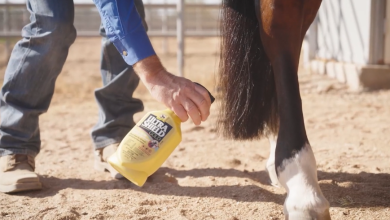7 Most Common Horse Injuries
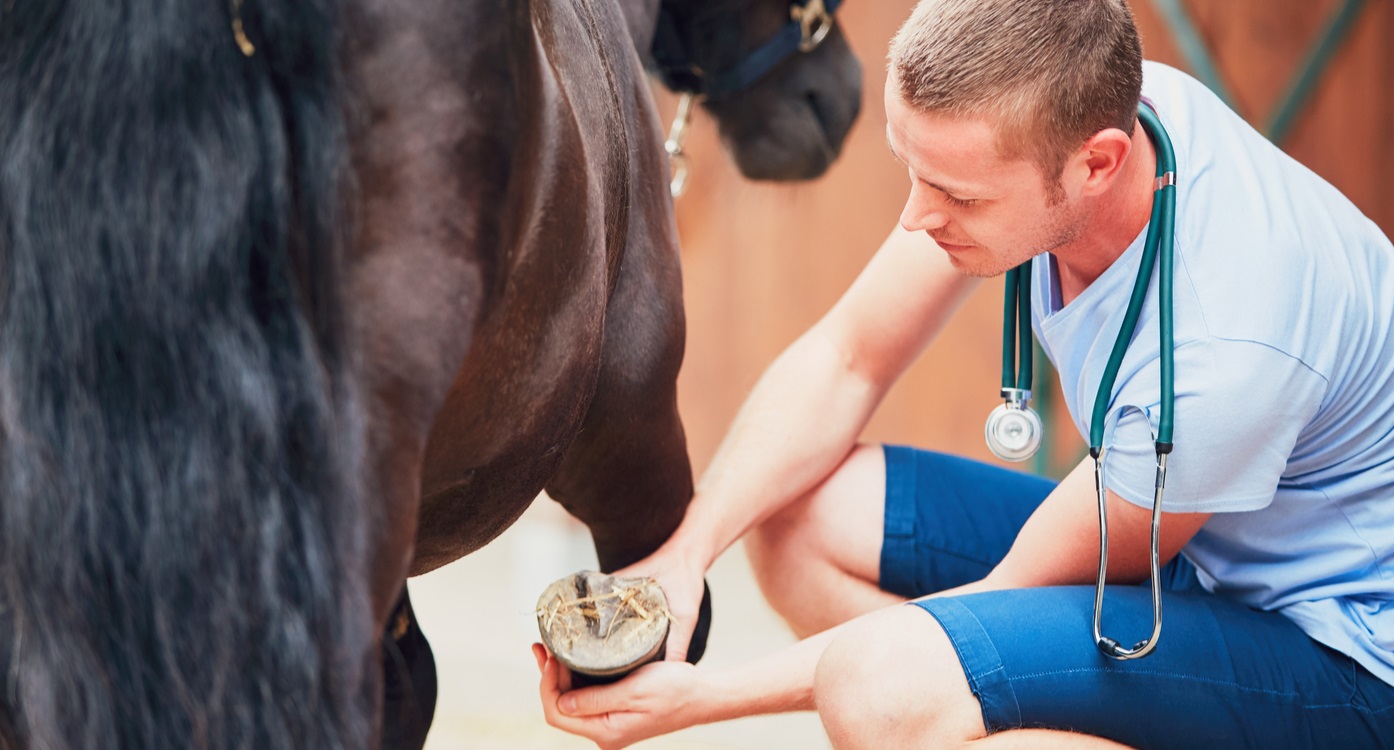
This post may contain affiliate links. We earn from qualifying purchases. Learn More
When working with horses, injuries are pretty much unavoidable. Horses that perform regular high-intensity exercise, such as racehorses, elite show jumpers, or eventers are the most at risk of injury.
The most common horse injuries are sore muscles, wounds, bruises, and damaged tendons and ligaments. Out of all injuries, damage to the legs and hooves is often the most devastating. After all, no foot means no horse.
As with all health conditions, prevention is always the best option. A serious injury can have a long-term effect on your horse’s well-being and career.
Therefore, as riders, we have a responsibility to minimize the chances of injury when working with and riding horses.
1. Muscle Soreness
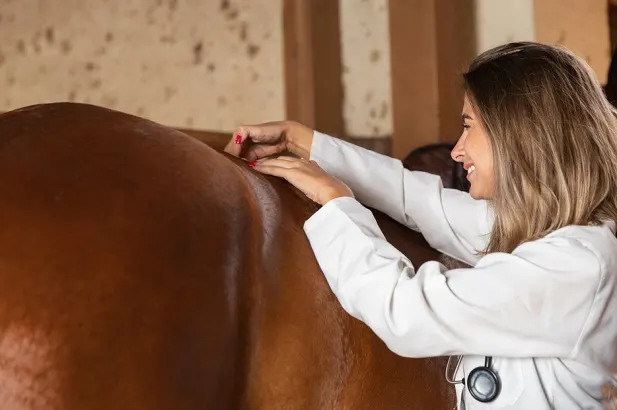
Muscle soreness and strain are one of the most common types of injuries in horses. They stem from overworking certain muscle groups, like the muscles of the back or hindquarters. Although muscle soreness is only a mild injury, the discomfort and pain can easily limit your horse’s performance.
Aching muscles are common in dressage horses who need to work harder with the hind legs and over the back to maintain collection. Heavy muscling and restrictive side reins also predispose horses to muscle soreness.
As this is a mild injury, the signs are often subtle and hard to spot. Your horse’s movement will probably seem stiffer than usual and he may be reluctant to perform certain exercises. It also complicates matters that these signs may improve as the horse warms up.
A few days of rest and plenty of turnout is often all your horse needs to recover from muscle soreness. If the problem persists, however, it’s best to have your vet check for any underlying issues.
Treatment for chronic muscle pain may include medication, muscle relaxants, or alternative therapies like massage and chiropractic treatment.
The best way to prevent muscle soreness is to allow your horse plenty of time to warm up and cool down before and after exercise. Regular massage sessions can also help prevent muscle soreness from becoming a problem and affecting performance.
2. Suspensory Ligament Injuries

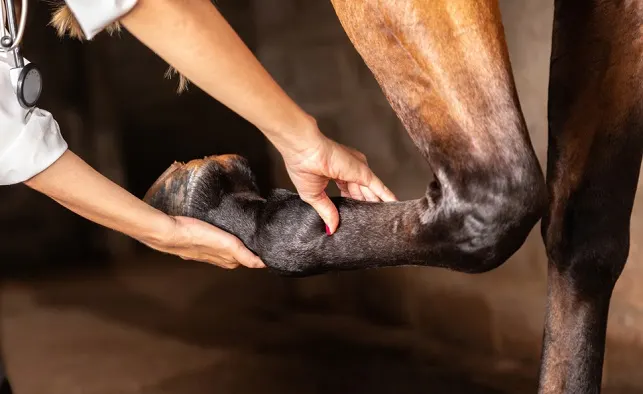
The suspensory ligament is an important structure on the back of the horse’s legs that provides support to the ankle joint. Injury to this ligament can occur due to stress or heavy impact to the leg during exercise.
Suspensory ligament injuries can range from mild to severe tears and can even lead to a bone fracture. They are most common in show jumpers and eventers where a misstep after a jump can damage the ligament. Dressage horses are also prone to suspensory ligament injuries in the hind limb.
This type of horse injury will most likely present as lameness, although the signs might not always be obvious. Depending on where the injury occurred on the ligament, there might be heat and swelling in the leg.
The vet may use nerve blocks or an ultrasound scan as additional diagnostic tools to investigate the problem.
As ligaments tend to heal poorly, recovery from a suspensory injury can take weeks to an entire year. Depending on the extent of the damage, your horse may receive cold therapy, anti-inflammatory drugs, shockwave therapy, stem cell treatment, or even surgery.
Return to exercise after recovery must be very gradual to avoid reinjury. Many horses will be limited in what they can do and will require careful management for the rest of their lives.
To prevent injury to the suspensory ligament, avoid overworking unfit horses and working on poor footing.
Also read: 12 Interesting Horse Skeleton Facts
3. Flexor Tendon Injuries


The superficial and deep digital flexor tendons run down the back of the horse’s legs and are essential to locomotion. Injuries to these tendons are common in riding and sports horses as they often overload the legs during exercise.
Strain due to a bad step can cause the flexor tendons to become tight and inflamed, while heavy impact can lead to tears. If the tendon is exposed to repeated stress, it may also become chronically thickened and inflamed which is known as tendinitis.
Inferior conformation and poor shoeing can both predispose horses to flexor tendon injuries. Following the injury, the tendon sheath will swell and heat up within 24 hours and may be painful to touch. The vet will usually conduct a lameness exam and may use an ultrasound scan to locate the injury.
Like ligaments, tendons heal very slowly and may take up to 9 months to recover. Treatment programs will vary depending on the severity and will be tailored to the individual horse.
Minor injuries can be cured with rest, cold therapy, compression, and anti-inflammatories, while more serious cases will require additional therapies.
As a damaged tendon will never be as strong as it was before, it’s best to avoid these injuries altogether. Boots and wraps can be useful for protecting the flexor tendons when there is a higher risk of injury, such as during jumping or cross-country.
4. Puncture Wounds


Puncture wounds are caused by long and sharp objects that penetrate deep under the horse’s skin. They typically have a small entry hole and are most commonly found on the legs and hooves. Puncture wounds should be treated promptly as they can get infected and cause lameness.
Because puncture wounds are small and hardly bleed, they can be easy to miss. They sometimes have swelling around the wound and you may notice pus draining from the hole.
Unless you are experienced and confident in what you’re doing, you shouldn’t attempt to treat a puncture wound yourself. As you can’t see how deep the wound is and whether there is infection, you should call the vet immediately.
If there is heat and swelling around the wound, cold hosing will help manage the pain until professional help arrives.
A vet will flush and disinfect the wound and may also apply a poultice to draw debris and fluids from the puncture. If an infection is suspected, the vet may also prescribe antibiotics.
While there is no sure way to prevent a puncture wound, removing nails and other sharp objects from your horse’s field will minimize the chances of injury.
5. Sacroiliac Pain

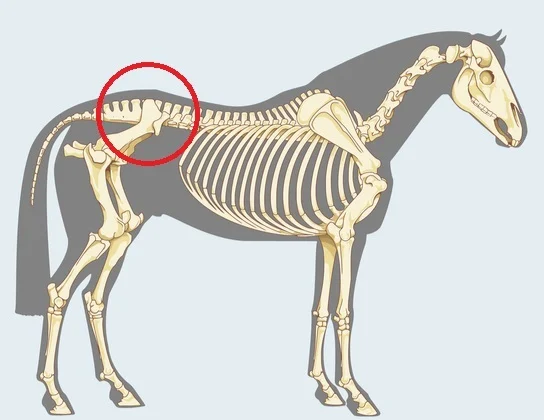
Sacroiliac pain is essentially pain in the croup area of the horse. It can stem from injury to the sacroiliac joint and surrounding structures, or simply from tightness in the muscles of the croup.
The sacroiliac joint is where the horse’s pelvis and spine meet. This joint is essential to everyday movement and is what propels the horse into a gallop, jump, collection, or a tight turn. Pain in the sacroiliac region is common in sport horses who work this joint harder than normal.
According to a recent survey by the University of Minnesota equine clinic, over half of 124 horses with back problems had issues in the sacroiliac region. This type of injury is most common in show jumping, dressage, and racehorses, as well as warmbloods that are taller and heavier than average.
Sacroiliac problems are among the hardest to pinpoint and are often mistaken for behavioral or other issues. The signs are extremely vague and may be limited to changes in your horse’s performance or attitude to work.
Treatment for this type of injury may involve rest, medication, physio, and other therapies. Because sacroiliac pain is caused by mechanical wear, there is no real way of preventing it in high-performance horses. Thorough warm-up and cool-down, as well as regular massage sessions can help reduce the risk of injury.
Also, take our fun horse anatomy quiz to test your equine knowledge!
6. Joint Inflammation

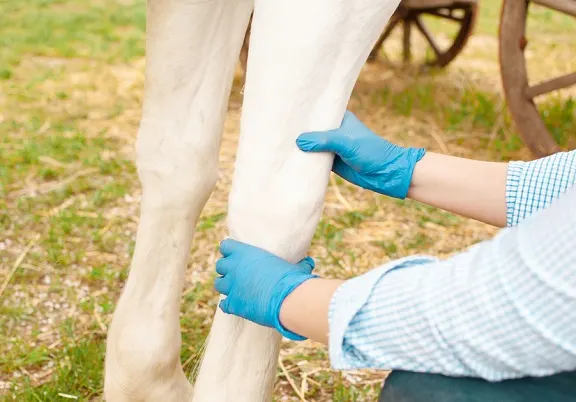
Joint inflammation or acute synovitis is sudden inflammation in the horse’s joints. It occurs due to stress to these structures and most commonly affects the fetlock, coffin, and hock joints.
Horses usually get inflammation in their joints when their workload suddenly increases. Certain movements, such as jumping, tight turns, collected gaits, and also novel footing can all increase the chances of joint inflammation.
While most cases occur suddenly and resolve within a short period of time, repeated stress to the joints can lead to osteoarthritis.
The signs of joint inflammation can be subtle at first. Your horse may seem unusually stiff or less forward in his movement. As the inflammation gets worse, more obvious signs such as heat, swelling, and pain will appear.
Your vet will generally be able to identify the problem via a thorough physical examination. He will likely recommend box rest with hand walking and cold hosing the inflamed joint.
Depending on severity, your vet may prescribe anti-inflammatory drugs or administer injections directly to the joint.
Most horses with joint inflammation will make a full recovery and are able to resume their usual work routine.
To avoid this common injury, refrain from overworking your horse and introduce changes gradually.
7. Bone Bruise

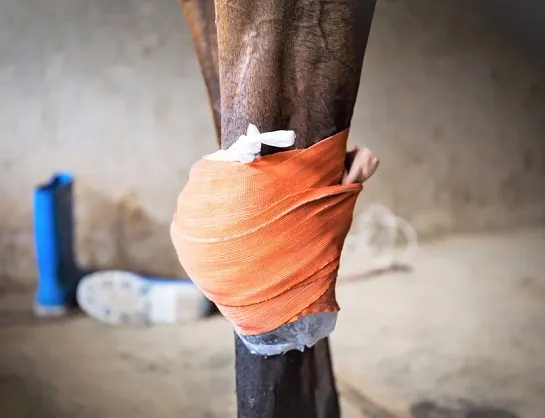
A bone bruise is microscopic damage to the bone that causes swelling and internal building and can lead to fluid build-up inside the bone. Bone bruises often result from working on hard ground or landing heavily after a jump.
This type of horse injury is most common in show jumpers and eventers, as their bones have to withstand greater impact forces. The bones of the lower limb are most prone to bruising, as they bear the entire weight of the horse and rider.
A horse with a bone bruise will be footsore and often visibly lame. This type of horse injury is more difficult to identify even by vets, who may use nerve blocks in conjunction with diagnostic imaging to get to the root of the problem.
While bone bruises are less serious than fractures, your horse will need to rest for a few months to recover fully.
Depending on the severity of the bruise, the vet may also prescribe anti-inflammatory drugs. Once the bone has healed, appropriate shoes and good-quality footing can help keep your horse sound.
Also read: 12 Most Common Horse Diseases and Ailments
